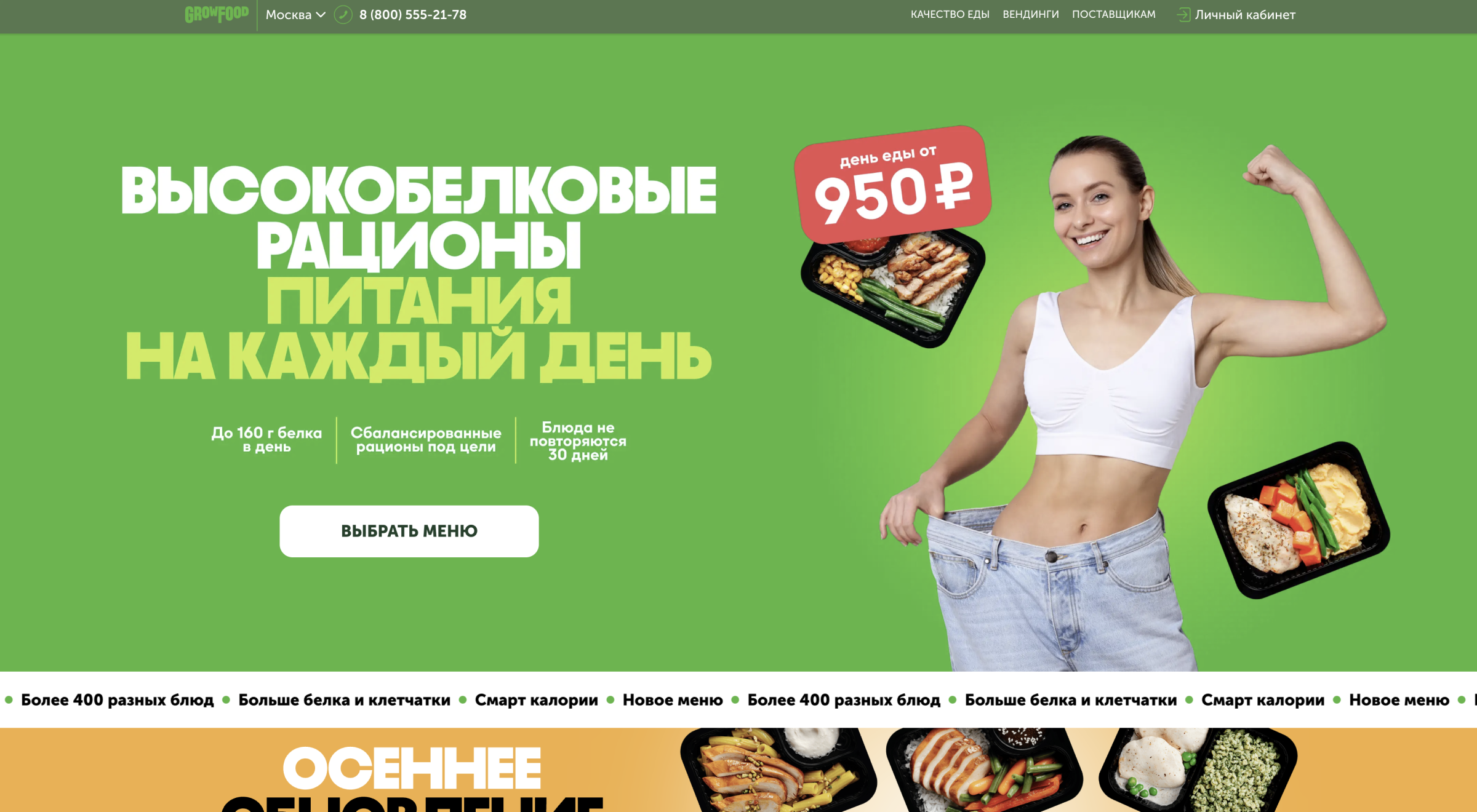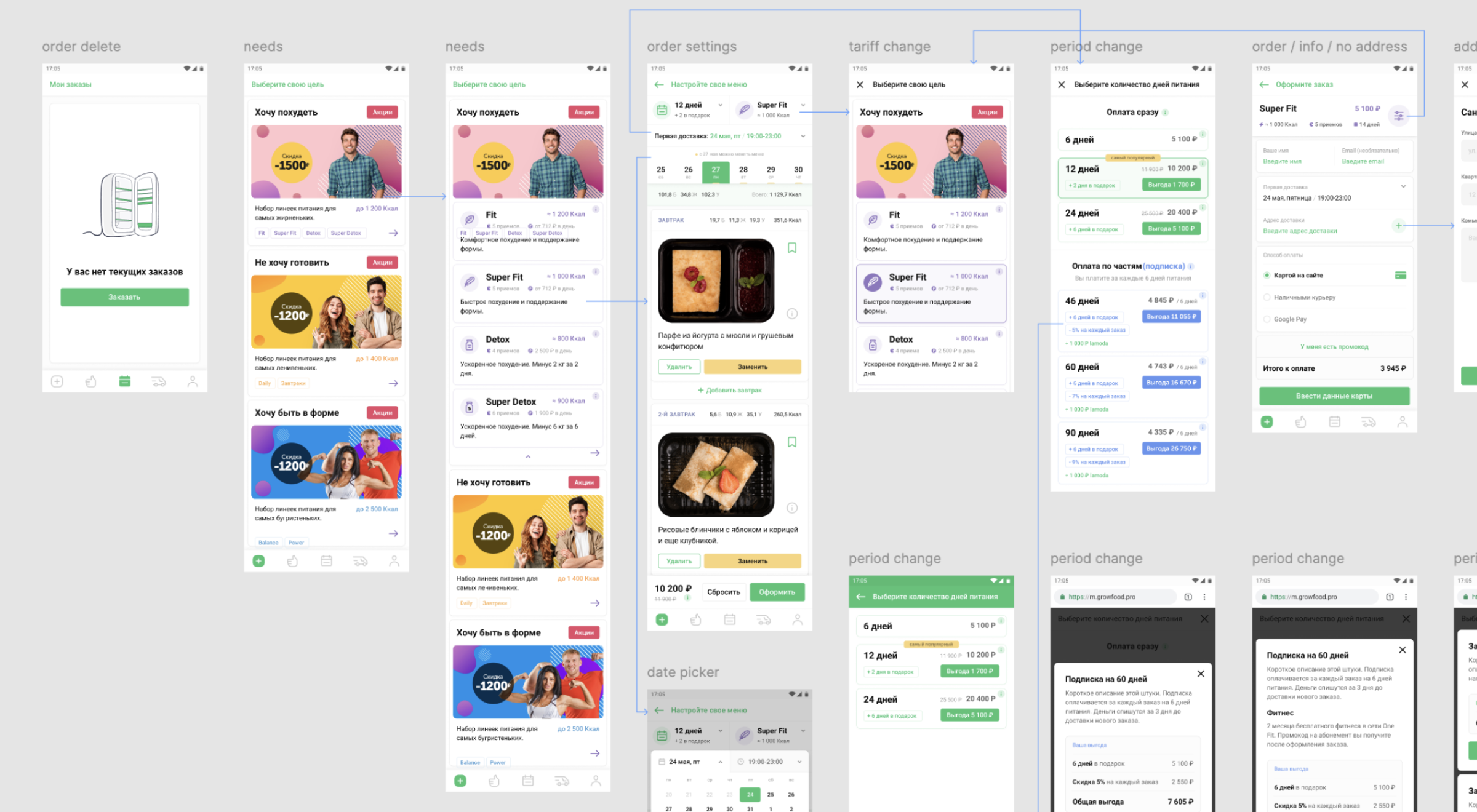
Introduction
From Startup Chaos to a Scalable Healthy Food Ecosystem (2016–2019)
When I joined GrowFood, it wasn't yet a company with a factory and millions of orders. It was a startup — with a working business model, a simple landing page, and a couple of Excel spreadsheets for portion calculations. Everything looked like a chaotic but living system: people order food, couriers deliver, but there was no digital product experience.
We had to create a digital ecosystem for a healthy food service from scratch — from the app to logistics.
Where it all started
The company had an understanding: the future food market is not restaurants or pizza delivery, but a daily meal subscription service. The problem was that no one knew where to start.
We conducted research: users order more often through mobile than through the website. The solution came quickly — start with an iOS app that would become the core of the ecosystem.
There were almost no competitors. In Russia — zero. In America — a couple of startups like Trifecta and Freshly. Everything had to be invented from scratch. To understand how food delivery should look, where it's not "instant" but planned (for the next day), we had to literally cross business models of pizzerias, fitness apps, and meal calendars.
Creating the first version
The first beta looked simple: meal plan, order button, delivery history, and personal account. But behind this was the entire logic of the chain — from meal selection to logistics.

First beta version of GrowFood app with basic meal planning interface
To understand where users get lost, I went with couriers. We delivered orders around St. Petersburg, talked to clients, took feedback right on the spot. This was honest field UX research: in the phone and in the car simultaneously.
We learned that users lack flexibility: someone wants to replace breakfast, someone doesn't eat fish, someone doesn't know how to cancel a day. These functions didn't exist in the app — until we realized how important it was.
Growth and feedback
A couple of months after release, we started getting feedback inside the app. We added analytics: which screens are opened more often, where they abandon orders, what they choose repeatedly. Marketing launched — and everything exploded.
Customer growth in St. Petersburg exceeded forecasts, and after six months we received investments and built our own food production factory. This moment became key: now we controlled product quality and supply processes.
After launching the factory — we entered Moscow.
Product evolution
When our own kitchen appeared, we could move away from template meal plans. Meal customization appeared in the app — for the first time on the market.
The user could:
- remove unwanted dishes,
- replace them with alternatives,
- set filters for allergies and ingredients,
- mark "I didn't like it" so the system wouldn't suggest it anymore.

Advanced meal customization features with food graph algorithm
We built a "food graph" algorithm: the app remembered preferences and selected new combinations in the meal plan. This turned the service from "food delivery" into a personal digital dietitian assistant.
Subscription and fitness integration
The next step was a subscription model — the user could arrange a weekly or monthly subscription without manually choosing every day. Along with this, we developed the "Grow & Train" concept — integration of nutrition and sports.
The idea appeared to combine the GrowFood app with partner gyms and activity trackers: nutrition, calories, and physical activity synchronized in one ecosystem. This became the first step to the "health as a service" model.
Ecosystem
In addition to the main app, we created:
- two courier apps — with routes, calculations, navigation, and the ability to earn bonuses for efficiency;
- a new website Growfood.pro — with a visual meal editor and delivery tracker;
- an analytics and review system inside the app.

Complete GrowFood ecosystem including mobile apps, courier tools, and web platform
All this was combined into a common data infrastructure that allowed seeing production loads, routes, and customer feedback in real time.
Results
After launching the complete GrowFood ecosystem, the product transformed from a simple delivery service into a comprehensive healthy food platform.
| Metric | Before | After | Change |
|---|---|---|---|
| Revenue (first quarter) | - | $4.3M | after marketing launch |
| Customer retention | ~60% | 90%+ | +30% |
| New user acquisition | Baseline | +10-24% | via affiliate app |
| Service NPS | ~40 | +74 | +34 pts |
| Repeat orders | Baseline | 2x+ | more than doubled |
Final thoughts
GrowFood became an example of how a digital product can grow real infrastructure. We started with a landing page and delivery "on our knees," and ended up with an ecosystem where food, technology, and data work together.
Now, looking back, I understand: this wasn't just app design. This was creating a new service category — digital nutrition, where UX affects how people eat, feel, and live.

